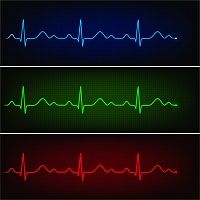Arrhythmia: Substrate Ablation Has Benefits
Substrate-based ablation (in which all damaged areas of the lower heart muscle are treated) has advantages over ablation of clinical ventricular tachycardia (in which the origin of the abnormal rhythm is pinpointed, then the target tissue is scarred with electrical current). Researchers at Montefiore Einstein Center for Heart and Vascular Care report on a study.

Taking a broader approach in treating ventricular arrhythmias with cardiac ablation resulted in lower recurrence rates, re-hospitalizations, and deaths Bronx, NY researchers report.
Luigi DiBiase, MD, PhD, director of arrhythmia services, Montefiore Einstein Center for Heart and Vascular Care and colleagues conducted a study at seven centers. The subjects were 118 patients with clinically stable ventricular tachycardia and ischemic cardiomyopathy. Sixty patients were randomly assigned to minimal ablation and 58 to substrate-based ablation.
The minimal radiofrequency catheter ablation procedure, which cauterizes and destroys areas of the heart muscle responsible for the arrhythmia, has been highly effective in restoring cardiac sinus rhythm. However, during ablation of clinical ventricular tachycardia, the physician must induce ventricular tachycardia by stimulating the heart muscle in order to identify the area(s) in need of cauterization. The trial’s substrate-based ablation technique, however, targeted all areas of abnormal potential with 3D mapping, which noninvasively creates a full picture of the heart and identifies areas of scar with abnormal electrical conduction.
Results of the trial revealed the following:
- Researchers were unable to induce clinical ventricular tachyarrhythmia in any of the patients at the end of the procedure.
- Patients who underwent the substrate-based ablation were significantly less likely to have a recurrent VT during the following 12 months..
- Patients who underwent the substrate-based ablation were significantly less likely to be re-hospitalized (12%, vs. 32% of the minimal ablation group)..
- Patients who underwent the substrate-based ablation had a slightly lower risk of death (8%, vs. 15% of the minimal ablation group).
"Substrate ablation in sinus rhythm was more effective, faster and easier than ablating during tachycardia," DiBiase said.
The study originated from a series of previous investigations that had uncovered a superiority of substrate-based ablation over clinical ventricular tachycardia ablation alone. In 2012, Di Biase and Andrea Natale, M.D. Natale published one of the first series on this approach in the Journal of the American College of Cardiology.
"We believe that this study will give clinical evidence to allow more physicians to test this approach," Di Biase said.